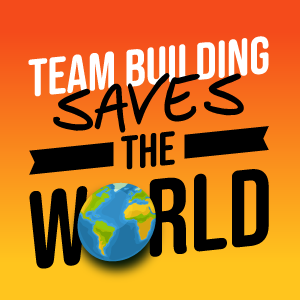There is nothing more demoralizing for a team then working on a project or job that has no distinct beginning, middle, or end. Humans like to know where they are going, how their progress is coming, and when they get there. Your business projects should be no different.
Take these three phases into consideration and see where you are in your teams projects (and more importantly if you are stuck in any one… ). Then, take some time in the planning stages of a project to break your project into multiple stages with recognizable BME (beginning, middle and end).
Beginning
When teams come together it is vitally important that they take some time to on-board in a way that allows people to get to know each other. This is the time as a leader that you come up with a shared understanding of purpose and core values.
In our practice we believe that this is best done as a collaborative approach. As a general rule these are the sequential steps that we take to on-board a team:
30 000 Foot View – This is the part of the planning process that is conducted by the project sponsors. This is the high level connection of vision, SLA’s, budgets, operations, role functions, etc. that goes into the design of the team.
Pickin’ Teams – Next, team leaders pick the people with the best skills for the job both from a behavior and technical skill perspective. These function areas should have KPI’s associated with the functions/roles early on for measurement in the Middle and End of the team project.
Showin’ your Cards – As pre-work for team members they should conduct some personal assessments that express their motives, values, and personalities. By knowing a bit more about “who we are individually” team leaders can be proactive about creating a conversation about possible conflicts and benefits of team interaction.
Setting the Target – Initial on-boarding of a team requires collective buy in on team purpose and values. Establishing those things early on with a well facilitated dialogue helps to pinpoint direction as well as gives teams the ability to measure success and progress, as well as manage relationships and expectations.
Say What? – In the beginning stage it is vital especially in todays co-located and virtual business world that we set standards and expectations early on about how teams communicate. What is said is valuable in a teams life, but how it’s said can be a game changer. Establish norms early on for communication etiquette.
Face to the Name – Establish some great rapport early on by letting people connect F2F (face to face). This opportunity should never be squandered spend lots of energy putting team members in situations where they get to know each others: names, strengths and stretches, commonalities, problem solving skills, expectations, and forward vision.
Picking Plan – Setting off on a new team project, as we all know, requires a work plan. Set your work plan with motivation in mind. Build in steps and stages your project plan. Have distinct points of celebration, measurement, achievement, and check-in. The plan should challenge your team with greater intensity as the project matures. And in the beginning target some low hanging fruit.
Ready for Takeoff – Now with the team being “on the same page” it is time to conduct an “opening ceremony” for your team. We have found that by giving people a visual and experiential time stamp on the beginning it helps to create clarity, motivation, and connection with the challenges of start-up.
Achieving a great start to a group often is best realized in todays busy work world with initial planning, reading and assessments being completed remotely. Then, providing a structured retreat that pulls information from the pre-work and uses that to expertly facilitate discussions and interactions between group members.
Middle
Now with the launch of your team and its culture, values, purpose, etc on the table it is now time to turn your attention to moving the masses. If you have conducted your on-boarding and launch effectively team members will be excited about getting to work and you will be well on your way to the meat of the teams interaction – the middle.
The middle can be the most challenging time of a project for a team. It can drag, create discontent, see member changes and even reveal planning and budgeting gaps – all of which create stress. Here are some of our best tips to help keep the team on track and inspired as possible:
Measure Twice – Setting up a simple means of measuring success if essential for your team. There are online tools that can help with project team management like www.rypple.com, these are especially good for virtual teams. However, you can keep it simple and prepare an easy to use dashboard that evaluates everything from team interaction to project outcomes. The key here it to make sure that you are measuring real objectives and actions that lead to the achievement of purpose. Ensure that you don’t over measure … create a regular plan to measure your team (i.e. bi-weekly, monthly, quarterly).
Low Hanging Fruit – In the initial stages of the ‘middle’ it is vital that the team members can see how their energies are beginning to yield success. So be cognizant of putting together some of the outcomes early on that are “easier to achieve”. Not simple. Just easier. Then celebrate those successes.
High Fives – Be sure to stay involved in your team efforts. Creating team success is as much about doing the work as ensuring that people are happy about doing it. Keeping on top of a regular reward, recognition and appreciate schedule that seems “spontaneous” is one of the greatest powers of a team leader. People like to be seen for doing a great job. People appreciate when equal work results in equal reward (more on that next month in our article “Independence Day – Celebrating your Team”).
Get Married to Movement – Shift happens they say. Be prepared for your team to experience some of that shift. Things will change along the way of a project teams cycle. Be ready to provide alternate plans, fight for budget, and change on the fly. The middle of your teams actions together champion the one true constant in life … change. Embrace it, and be ready to move with it with your agreed purpose and values in mind.
Champion from Above – Jeremy Gusche the founder of www.trendhunter.com and I were chatting one day and he says that part of Exploiting Chaos in the business world necessitates that you promote your favorite things to anyone who will listen. Make sure as a team lead that you use every opportunity available to champion and promote your teams efforts to senior leaders. Knowledge of the good work in the board room does trickle down to the front lines, and if you can expedite it by shooting a quick video of a VP or CEOgiving high fives to your team – kudos to you, that will pay huge dividends.
End
OK let’s get real here. It is too often that our teams have to work on the project that never ends. This is a real shame to the morale, job satisfaction and professional development of your team members. It is far better to champion that your project has an end, and a new beginning. Find logical times in the provision of the project that make sense to say “we did it, we’re done, and we’re moving onto the next thing.”
For sure there will be times that teams will come back together and work on a new phase of the same project. It is important as a team leader that you relaunch the team, it’s purpose, and collective values. Why? Things change, people change, and destinations are vital and goal achievement is vital. That is why we must provide logical and celebrated ends to projects, otherwise the project becomes a repetitive and begrudged task, opposed to an opportunity. Here are some great ways to say we made it to the end:
Night at the Oscars – Make an event out of finishing your teams project or task. Take the time to organize an event that allows people to celebrate with their peers the success they had. Forget the T-Shirts, Glass Trophies and the like. Instead, focus on delivering meaningful messages of why individuals were important to the success of the project. Winning an Oscar is not about the trophy (you can buy those on Pawn Stars) but rather the accolades that peers and colleagues express are the tipping point that motivates individuals to work hard again.
Apples and Onions – At the conclusion of any project teams interactions you will have a plethora of data. This will come from the Dashboards that you did during your formative evaluations, but also you should take the opportunity to do a summative evaluation of peoples opinions as they relate to the established purpose and value sets from the outset of the team. Be sure to find the apples (good stuff) and onions (bad stuff) that people feel about the project and the team. This exit interview will help you to build better teams in the future.








